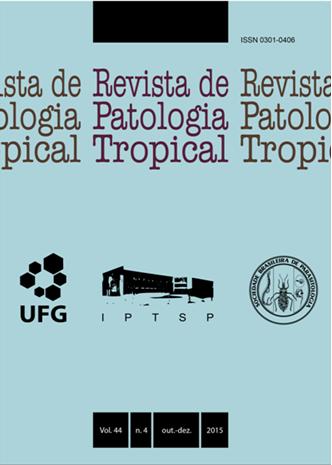SEROPREVALENCE OF HUMAN INFECTION WITH TRYPANOSOMA CRUZI IN A RURAL AREA OF SOUTHERN BRAZIL
DOI:
https://doi.org/10.5216/rpt.v44i4.39230Keywords:
Chagas disease, risk factors, seroepidemiologyAbstract
Chagas disease is caused by the protozoan Trypanosoma cruzi. Although Latin America is defined as endemic, there are few studies in relation to seroprevalence of T. cruzi infection in rural areas, where the individuals do not have information on this disease. The objective was to investigate the seroepidemiology of T. cruzi in a rural human population of the city of Pelotas, Brazil. A total of 227 individual users of a Basic Health Unit (BHU) of Cerrito Alegre, (third district of Pelotas, RS) were included in this study. Blood samples were collected and sera were tested for antibodies against T. cruzi through Chemiluminescent Microparticle Immunoassay assay and confirmation by Indirect Immunofluorescence test. The risk factors associated with the presence of the parasite were evaluated through a semi-structured questionnaire. The population evaluated had 2.7% seropositivity for T. cruzi. Among the risk factors, two were statistically different: the kind of housing (p=0.0093), with the greatest risk to live or have lived in a house of wattle-and-daub, clay, wood (OR 46.9) and the fact that the individual had been bitten by the vector (p=0.0309 and OR 14.5)Downloads
Downloads
Published
How to Cite
Issue
Section
License
The manuscript submission must be accompanied by a letter signed by all authors stating the full name and email address, confirming that the material has not been published or is under consideration for publication elsewhere, and agreeing to transfer copyright in all media and formats for Journal of Tropical Pathology. The authors will not be paid for published articles. They are solely responsible for the content of those articles, even if the Editor holds the right to adjust them to the norms of the journal.
The reviewers will not be paid for the peer review process.

